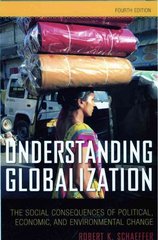Question
For a model of multiple tasks, there is final good y whose production depends on tasks y1,y2,...,yM completed. The production function of the final good
For a model of multiple tasks, there is final good y whose production depends on tasks y1,y2,...,yM completed. The production function of the final good is: y=min(y1,y2,...,yM)
There are L individuals. Each individual has total time T. If an individual allocates Ti units of time to a task, she produces KTi^a of intermediate input related with that task. Production function of each intermediate input has increasing returns to scale (i.e. a>1).
1) What does it mean to have a production function with increasing returns to scale?
2) In the multiple task model, why we expect production function of intermediate goods to have increasing returns to scale?
3) Suppose there's only 1 task to produce ? (that is, M = 1). What's the reason for teams (cities) to exist? Why or why not?
4) Now suppose that M>1. Why are people wanting to collaborate? Would we see only one city? Why/why not?
5) If there are 2 tasks, that is M = 2. How much of each task should be performed relative to the other task in order to optimize y? Show on a graph.
6) How much time should be allocated toward each task? Why?
7) Suppose L= sM and s is a positive integer. How many cities will develop? Why? How does this depend on s?
8) What does the fact that employment is not split evenly among professions in cities imply about the assumptions about the production technology? Generalize the production function y=min(y1,y2,...,yM) to account for this fact while maintaining perfectly complementary inputs.
Step by Step Solution
There are 3 Steps involved in it
Step: 1

Get Instant Access to Expert-Tailored Solutions
See step-by-step solutions with expert insights and AI powered tools for academic success
Step: 2

Step: 3

Ace Your Homework with AI
Get the answers you need in no time with our AI-driven, step-by-step assistance
Get Started


